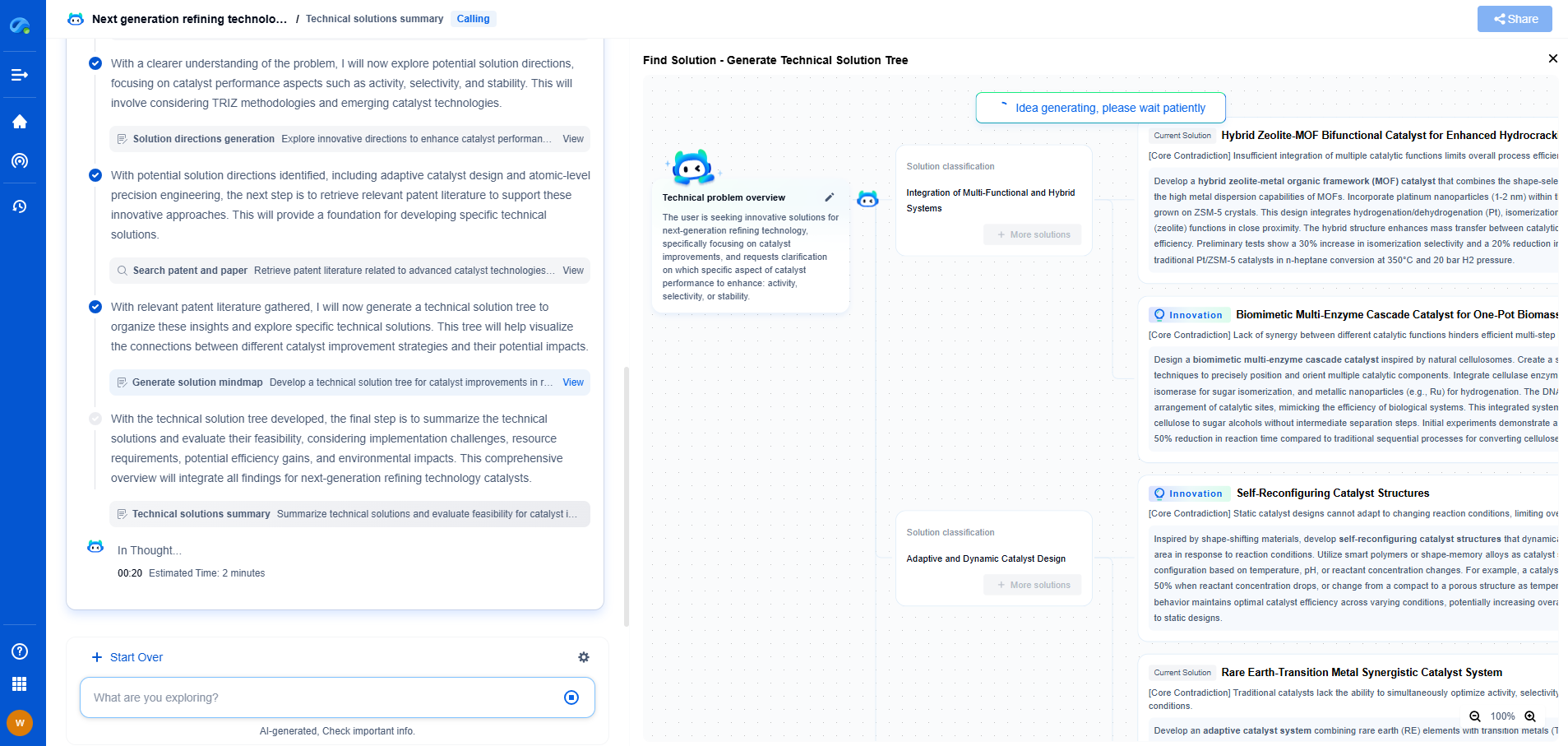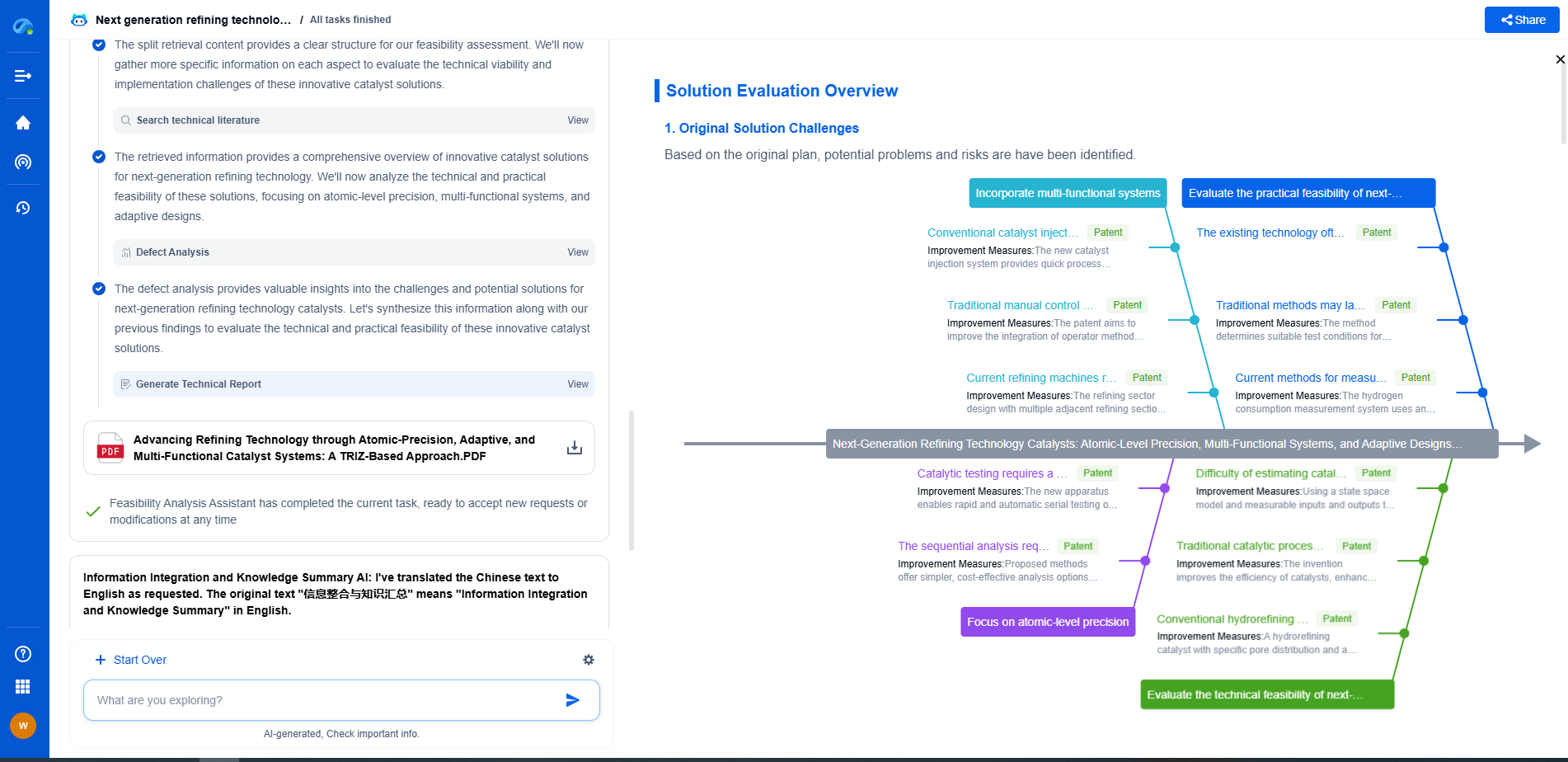Understanding Vacuum-Jacketed Insulation in Gas Transport Systems
JUL 21, 2025 |
In the complex world of gas transport systems, maintaining the integrity and efficiency of the transported medium is crucial. One of the most effective solutions to achieve this is through vacuum-jacketed insulation. This advanced insulation technology plays a pivotal role in ensuring that the temperature and pressure of gases remain stable as they travel through pipelines, minimizing energy losses and enhancing system safety.
The Principle of Vacuum-Jacketed Insulation
Vacuum-jacketed insulation works on the principle of minimizing heat transfer between the transported gas and the external environment. It consists of a double-walled pipe system. The inner pipe carries the gas, while the outer pipe creates a vacuum-sealed space around it. By eliminating air and other gases from the space between these walls, heat conduction and convection are significantly reduced. As a result, the insulation system effectively preserves the temperature of the gas inside the pipeline, regardless of external conditions.
Advantages of Vacuum-Jacketed Insulation
1. Improved Thermal Efficiency
One of the primary advantages of vacuum-jacketed insulation is its exceptional thermal efficiency. By reducing heat transfer, it ensures that the transported gas maintains its desired temperature over long distances. This is particularly important for cryogenic gases, which require low temperatures to remain in a liquid state. The better the insulation, the less energy is needed to maintain these conditions, leading to reduced operational costs.
2. Increased Safety
Safety is a paramount concern in gas transport systems. Vacuum-jacketed insulation offers enhanced safety by reducing the risk of temperature-related failures such as pipe ruptures or leaks. With minimal heat ingress, the pressure within the pipe remains stable, decreasing the likelihood of accidents.
3. Environmental Benefits
By improving the thermal efficiency and safety of gas transport, vacuum-jacketed insulation also presents environmental benefits. More efficient insulation means less energy consumption, which in turn reduces the carbon footprint of gas transportation operations. Additionally, preventing leaks and maintaining system integrity helps avoid potential environmental hazards associated with gas spills.
Applications of Vacuum-Jacketed Insulation
Vacuum-jacketed insulation is employed in various sectors where temperature control of gases is critical. In the cryogenic industry, it is essential for transporting liquefied natural gas (LNG) and other cryogenic fluids. The food and beverage industry also utilizes this insulation for the transportation of gases like carbon dioxide and nitrogen, which are used in refrigeration and carbonation processes. Furthermore, the medical field relies on vacuum-jacketed systems for the safe distribution of medical gases.
Challenges and Considerations
While vacuum-jacketed insulation offers numerous benefits, it also comes with its set of challenges. The initial cost of installation can be high due to the complexity of the system and the materials required. Additionally, maintaining the vacuum over time necessitates regular inspections and potential repairs to ensure optimal performance.
Future Trends in Vacuum-Jacketed Insulation
As technology advances, vacuum-jacketed insulation is expected to become even more efficient and cost-effective. Innovations in material science may lead to the development of lighter and more durable components, further enhancing the system's performance. Additionally, advancements in monitoring technologies could provide real-time data on the insulation's effectiveness, allowing for proactive maintenance and improved reliability.
Conclusion
Vacuum-jacketed insulation is a cornerstone technology in the efficient and safe transport of gases. Its ability to maintain thermal stability and reduce energy consumption makes it an invaluable asset in various industries. As technological advancements continue to enhance its capabilities, vacuum-jacketed insulation will undoubtedly play an increasingly critical role in the future of gas transport systems.
As clean energy and decarbonization drive new breakthroughs in hydrogen storage, CO₂ transport, and alternative gas carriers, keeping pace with technical trends and patent activity is critical to staying competitive.
Patsnap Eureka helps innovators in compressed gas storage, high-pressure tank design, gas sensor systems, and pipeline materials accelerate research by offering instant, AI-powered insights into global patents, related technologies, and emerging white spaces.
🚀 Bring speed, precision, and strategic foresight to your innovation and IP decision-making in the gas transport sector—try Eureka today and unlock a smarter path forward.
- R&D
- Intellectual Property
- Life Sciences
- Materials
- Tech Scout
- Unparalleled Data Quality
- Higher Quality Content
- 60% Fewer Hallucinations
Browse by: Latest US Patents, China's latest patents, Technical Efficacy Thesaurus, Application Domain, Technology Topic, Popular Technical Reports.
© 2025 PatSnap. All rights reserved.Legal|Privacy policy|Modern Slavery Act Transparency Statement|Sitemap|About US| Contact US: help@patsnap.com

